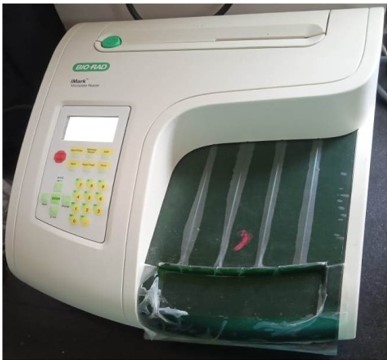Quantification of Flavonoids & Phenols presents in Tridax procumbens L. (Vishalyakarani) Leaves found in Gandhamardhan hills, Bargarh (Odisha)
DOI:
https://doi.org/10.21760/jaims.8.9.9Keywords:
Tridax procumbens, Hot oven method, Soxhlet Extractor, Micro Plate Reader, 96-well plate methodAbstract
Background: Vishalyakarani or Tridax procumbens L. is an Ayurvedic herb under asteraceae family with traditional use in wound healing purpose. It has many pharmacological properties including anti-microbial, anti-cancer, wound healing and anti-septic. Purpose: The present study is a combined study consisting reviewing the anti-microbial lspectrum of Tridax pocumbens L. (Vishalyakarani) and quantification of flavonoids and phenols from its leaves specially from the ganghamardhan hill area, Odisha. This aims to equip researchers a useful data about the chemical contents of T. procumbens. The extract was prepared by using Soxhlet extractor and concentrated by distillation. Phytochemical analysis revealed the presence of flavonoids, phenols in extract and quantification by the high-throughput 96-well plate method. Method: The review process yielded 748 journals and after thorough discussion 81 papers were selected. The plant has many chemical compounds including flavonoids, essential oils, phenols and wide range of pharmacological activities from which we have included the anti-microbial activities. Conclusion: Historically and from Ramayana we have heard about the effectiveness of the Vishalyakarani in wound healing and in present review proves its worth. But there was a lack of quantification of two important phyto contents and its done by high-throughput 96-well plate method.
Downloads
References
Chauhan, B.S and D.E Johnson, Ecology of two troublesome asteraceae species of Rain field rice : Chromolanea odorota and Coat Buttons (Tridax procumbens) Johnson Weed. Science, Cambridge, 2008:56:567-573.
Chauhan, B.S and D.E Johnson, Ecology of two troublesome asteraceae species of Rain field rice : Chromolanea odorota and Coat Buttons (Tridax procumbens) Johnson Weed. Science. Cambridge, 2008: 56:567-573.
Chauhan, B.S and D.E Johnson, Ecology of two troublesome asteraceae species of Rain field rice : Chromolanea odorota and Coat Buttons (Tridax procumbens) Johnson Weed. Science, Cabridge, 2008: 56:567-573.
Chauhan, B.S and D.E Johnson,Ecology of two troublesome asteraceae species of Rain field rice : Chromolanea odorota and Coat Buttons (Tridax procumbens) Johnson Weed. Science.Cambridge,2008: 56:567-573.
Muthusamy, R.K. Vasu, L Kangaraj, D.Ponnampallam and B. Wilson. Phytochemical screening and evaluation of Antibacterial activities of methanol extract of Tridax procumbens, International Journal of Pharmacy and Biological Science., New Delhi,2013:3(1),521-524.
Chauhan, B.S and D.E Johnson,Ecology of two troublesome asteraceae species of Rain field rice : Chromolanea odorota and Coat Buttons (Tridax procumbens) Johnson Weed. Science. Cambridge, 2008: 56:567-573.
Bhat, R.S., J.Shankarappa, H.G. Shivakumar,. A review on Pharmacognosy, Pre-Phytochemistry and Pharmacological analysis of Tridax procumbens. Asian Journal of Pharmaceutical Sciences, Tokyo,2007:2(1),11-17.
Perez-Gregorio RM, Garcia-Falcon MS, Simal-Gandara J, Rodriguez AS, Almeida DPF, Identification and quantification of flavonoids in traditional cultivars of red and white onions at harvest. Journal of Food Compos Anal, Reading (U.K) 2010:23(6)592-598.
Perez-Gregorio RM, Garcia-Falcon MS, Simal-Gandara J, Rodriguez AS, Almeida DPF, Identification and quantification of flavonoids in traditional cultivars of red and white onions at harvest. Journal of Food Compos Anal, Reading (U.K),2010; 23(6)592-598.
Perez-Gregorio RM, Garcia-Falcon MS, Simal-Gandara J, Rodriguez AS, Almeida DPF, Identification and quantification of flavonoids in traditional cultivars of red and white onions at harvest. Journal of Food Compos Anal, Reading (U.K),2010; 23(6)592-598.















